S&OP MasterClass™
Winning Aftermarket Sales with Integrated Business Planning
Welcome to this S&OP MasterClass.
These MasterClasses have the purpose of diving into Integrated Business Planning and Supply Chain Planning in general, hopefully giving you some good inputs on the way.
894018039
This episode digs deep into “Integrated Business Planning (IBP) for aftermarket companies.” Most aftermarket companies tend to neglect integrated business planning. However, including aftermarket sales and service in supply chain planning is beneficial and ensures better customer service.
We explore the above aspects with S&OP expert Benjamin Obling. He explains the importance of focusing on the aftermarket, common aftermarket hurdles, and strategies to optimize the supply chain for aftermarket sales.
Your host is Søren Hammer Pedersen who will walk you through the complexities of Integrated Business Planning in the aftermarket.
In This Episode
Below are the crucial timestamps from this podcast episode. You can jump to the topics that interest you.
00:58 What is the aftermarket and what are aftermarket companies?
02:17 What is integrated business planning or IBP?
03:08 Why IBP is overlooked in aftermarket companies and why it is important.
07:19 Common challenges faced in current supply chain plans for the aftermarket.
09:20 The global supply chain crisis and planned versus unplanned maintenance.
13:00 Important issues when transforming your demand plans to a supply forecast.
16:46 Non-critical but profitable spare parts
18:35 Focusing on aftermarket sales independent of main sales.
20:41 Short- and long-term gains from implementing IBP.
24:18 Demand sensing
26:15 How to start your IBP aftermarket journey
32:48 Integrated business planning in the future
Full Episode Transcription
Søren: [00:09]
Hello, everybody. Welcome to this S&OP MasterClass from Perito Consulting. These MasterClasses have the purpose of diving into integrated business planning and supply chain planning in general, hopefully giving you some good inputs on the way.
Søren: [00:23]
Today’s topic is integrated business planning in the aftermarket. And this may be a new topic for many of you out there, but it is a topic that is very relevant for many companies. And today, joining me in the studios, I had invited my good colleague, Benjamin Obling, who is a COO in Perito Consulting and has more than 20 years´ experience implementing these projects for our clients. Welcome, Benjamin.
Benjamin: [00:49]
Thank you. Hi, Soren.
Søren: [00:58]
Hi. I think before we get started with the actual aftermarket topic and diving into what happens within the company, I think for the listeners’ sake, we need a bit of definition out there. First of all, what do we mean when we say aftermarket and aftermarket companies?
Benjamin: [01:16]
Yeah, so basically aftermarket is that when the company has a main product and then you have some spare parts or consumables that goes along with it. You basically you sell this main product, and then after some time you might need to service it, or some parts of that main product might break down and you need to change those.
Benjamin: [01:36]
The good example is our car, for example. We buy the car, but it won’t drive forever unfortunately so we need to change the brakes or the gear boxes, et cetera. Some of that is planned, so we go in for a scheduled service, and we’ll get back to that I’m sure. And some of it is unplanned, so that’s the unfortunate stuff where something breaks down and the car is not able to drive anymore.
Søren: [01:59]
Yeah. Okay. Really a business besides the business. We have the main product, and then we have all the service and the parts afterwards in many cases.
Benjamin: [02:08]
Yeah, yeah. Exactly. And I guess the very interesting part about this is that in many cases that’s a quite lucrative or profitable part of the company.
Søren: [02:17]
Yeah. Okay, so that was the aftermarket. The other main topic of course is the IBP, or the integrated business planning. Could you say just a few definitions on that?
Benjamin: [02:28]
Yeah. So sometimes we define it as a sales and operation planning plus, or you could say on power, powered up. But basically it’s, of course, the demand planning, it’s the inventory optimization, it’s the supply optimization, but there is also a financial aspect to it. Basically adding the budgets, making the link across the full company in the planning.
Benjamin: [02:52]
Basically, making a full end-to-end integrated business planning, both in terms of very operational level, but also on the tactical and even strategic level, looking out two, three, four, five years ahead, but also into the auto handling of tomorrow.
Søren: [03:08]
Okay. Getting into the actual topic of today, aftermarket companies, my point was that sometimes IBP gets overlooked in these types of companies. Why is it, do you think that is?
Benjamin: [03:26]
You can say, it depends of course a lot on the specific company. But you could say one pitfall could be that you’re very focused on these main products. So you have your equipment, you have, let’s say, your wind turbine, a car analytical device that you’re very focused on, maybe you’re a sort of engineering driven company. You really, you fancy inventing this new product, that’s really where your focus is. And you want look at the next product in the company, and that’s where the focus is.
Benjamin: [03:57]
But of course you have all of this equipment standing with your customers and that’s super critical that they get a good customer experience of course, with that. So that means when something breaks down, they need to have the parts available to have that good customer experience with it, because that might be very critical for the customer of course. As one part, the other part being this can be pretty profitable if you address it in the right way.
Søren: [04:21]
Yeah. And you say pretty profitable. And then my thesis would be that there was a CFO instantly focusing on this area, but it’s not your experience that it has that much focus within these companies.
Benjamin: [04:34]
At least there is a risk that it doesn’t get the attention that it should, because if you mix all of it together and you’re reporting and you don’t separate it out, so what is aftermarket or aftermarket sales? What is the profitability around that? And what is our main product and the profitability around that? You might overlook that the aftermarket can be pretty profitable.
Benjamin: [04:55]
That’s one part, the other apart be, and the spare parts that you need might come from the same item numbers, even it might come from the same location. So that means it can be pretty difficult to determine what is actually going into our main equipment, our main product, and what is going to the aftermarket. And that can remove the transparency around the profitability. And then you lose out on the profitability of really, you could say, or the opportunity of really making it profitable.
Søren: [05:27]
Yeah.
Benjamin: [05:28]
And it could also be that some of these spare parts that, even though you could say for the production of the main equipment, you can get by, and you can plan that, and you have what you need available, and you want to reduce your inventory levels. You then reduce also the spare part for the aftermarket sales.
Benjamin: [05:49]
And thereby where you actually get too low and get a too low availability towards the clients. Meaning they will have a bad customer experience and you’ll lose the gross profit you could earn from that.
Søren: [06:01]
Actually, what you’re saying is that in the event you want to do a transformation in your supply chain planning and really upgrade it, most companies that we meet, they need a business case to do that. They need to get the board of directors onboard and really show the numbers. So there might be a golden opportunity here to actually focus even more on the aftermarket part of your business to have really good numbers in your business case and … Yeah.
Benjamin: [06:28]
Yeah, absolutely. And that’s really important. Not only to come in with the working capital reduction aim or goal, it might as well be revenue improvement or gross profit improvements. Because that could be like the example we had before with the spare part being a bit overlooked. Maybe it’s a B product because it’s not moving a lot, but when it’s moving and when you have sales in the aftermarket, it’s a critical sales. You can turn up the price a bit so you can actually get a quite high profit.
Benjamin: [06:56]
Maybe it makes sense to have a higher service level on that aftermarket sales, because then you’re ready to sell. And you might even have competing companies on that spare part sales. If you’re in that situation, you really need to balance your service levels to make sure that they are financially balanced also with the high profitability you have on those elements.
Søren: [07:19]
Okay. Maybe also for the listeners to get an understanding on the situation that these companies are in, let’s play with the thought that they never heard of IBP, and doing the best they can in the supply chain footprint with the planning they have. What is your experience around those kind of challenges they are facing, without this automation or this focus?
Benjamin: [07:43]
Yeah, I think the main challenge is the transparency, losing the transparency. Because if you have a main equipment, and in that main equipment you put in a spare part, a certain component. Or that wouldn’t be a spare part in the beginning, it would be like a component going into your product, your car, your turbine, your equipment. You need some of that on stock in order to do the production. And that’s all good. But then afterwards, you also have these aftermarket sales going on, which can be a planned maintenance, or it can be this unplanned so it’s coming out of the blue and maybe it causes the equipment to no longer work.
Benjamin: [08:23]
And if you don’t have any IBP system to support this, you want to know that the consumption you have, so basically the material movements you have, is that going to our production, is it going to consumables? It is for the aftermarket, is it going to spare parts? Is it a critical spare part? I mean, does the equipment work if this spare part breaks down? Some of the spare parts, it will work still. With the wind turbine, for example, the handle of getting into the tower, for example, that’s okay. But the gearbox, okay, that’s critical. That will stop the turbine from spinning or the gearbox in the car will stop the car from working, but other things might not.
Benjamin: [09:02]
If you don’t have that transparency, it will just be a lot of items you have. So, you’ll have thousands of items, some of them going into the production, some going to aftermarket, some being critical, not critical, blah, blah. But basically, you don’t have the transparency of what is the demand types that we are looking at here.
Søren: [09:20]
I guess also the companies are very much affected by the supply chain crisis at the moment in the aftermarket. I’m just triggered by, you’re saying transparency and overview. If you have a global supply chain, this must be very much difficult to handle without this overview and these transparencies.
Benjamin: [09:42]
Yeah, absolutely. And you might end up stocking too much because if you don’t know … As an example, if you don’t know if it’s planned or unplanned, so if you have scheduled service, for example, or scheduled maintenance.
Benjamin: [09:55]
Sometimes you have some peaks in your demand on one of these thousands of items. If you don’t know if that is planned or unplanned in some region around the world, in a large footprint with a lot of different warehouses, et cetera. If you just run an algorithm across that and don’t have the transparency, you might say, “Okay, then we need to buffer up because this is a very lucrative business. We’re earning a lot of money on this.” But then you certainly have a demand of, let’s say, 100 pieces on that specific warehouse, somewhere down … Now we a bit into the details.
Søren: [10:27]
Yeah.
Benjamin: [10:27]
But basically that would mean, “Okay, then I need to have 100 because I need to be prepared for the next time.” But in fact, this was planned, it was a planned maintenance so it will actually be based on a scheduled service order in our IBP system, et cetera, if it comes up again. So we don’t need those 100 pieces at that specific warehouse.
Benjamin: [10:44]
And that’s again, back to the transparency you could say. And with having thousands of spare parts, which many of our clients have, or that could be 10, 30, 100,000 spare parts. You could have, let’s say, one global warehouse, then you’re in a bit better position. But many companies, they need to have a lot more warehouses going to, to 1,000 warehouses even in the extreme cases. And that means controlling that, getting the overview of that. That’s basically what the integrated business planning can do for you, in making the transparency across that.
Søren: [11:16]
Okay. Very interesting. I think if we have those challenges, then of course the question that people really want to know is, okay, how to handle that, so how to approach this. It’s easy for us to say, “Okay, you just have to do IBP and then you’ll be safe.” But maybe taking it some steps here. How do we approach these challenges? If you want to implement and work with those.
Benjamin: [11:43]
As you could say, one thing would be to create the transparency. And that’s really easy to say and not so easy to do.
Søren: [11:50]
Yeah, yeah.
Benjamin: [11:50]
But you could say one thing is, that I would certainly recommend, is to start looking at the demand types. Basically splitting your demand into what is the reason for the demand. That could be what is planned demand, so basically we have some scheduled maintenance, for example. We need to tag that and be able to separate that from the other demand types.
Benjamin: [12:11]
What is then unplanned? Basically something comes out of the blue. Our gearbox doesn’t work anymore. That’s an unplanned demand. We need to take that a separate, and then we need to tag what is going into the production in the first place to produce our equipment. Then you have those three main demand end types and that can be more … Then you start to have the transparency around it.
Søren: [12:34]
We are actually starting with a forecasting exercise-
Benjamin: [12:36]
Yes.
Søren: [12:36]
… even though we are actually talking about an aftermarket. So, it’s the same mechanism as, basically, you would if it was a normal or a main product.
Benjamin: [12:45]
A lot of this you basically have the same issues as you have in a non-aftermarket environment. But here basically, for example, having the different demand types of planned and unplanned, which you don’t have if it’s, let’s say, a normal IBP.
Søren: [13:00]
Yeah. But it is then still also the same exercise going from the … Let’s say, now we created the demand plan as you talked about, then we have to transform that to the supply forecast or the supply planning. Any specific issues going in there you have to be very aware of?
Benjamin: [13:17]
Yeah, so then you could say you’re most certainly probably in the situation that some of these spare parts you need of aftermarket items here, you need to have some availability on stock. You have some make two stock situations where you need to have some stock provided around the world, because you need to have a short lead time towards your customers to serve and make sure that their main equipment will get up and running again if something goes down. And there you need to have a way of determining what is the right safety stock at each component level, each material level, at the different warehouses.
Benjamin: [13:54]
And in that process, one thing is the, you could say, having the right mechanism, the right calculations, the right tools for it, that’s one part. The other part is then to discuss which demand types should then go into this. Because for example, having this situation with the planned schedule, that probably shouldn’t be part of your safety stock calculation, because you know it, you know it well in advance so that’s something you’ll plan using the orders. But the unplanned, that is really what you need to have ready and what should go into your safety stock and stock optimization calculation.
Søren: [14:27]
But I guess you also, in that case, what you described here, is very affected also by which kind of frame agreements you have with the client. Because you mentioned about safety stock, but you might have a frame agreement saying that we can never go out. You always have to have 3,000 of this gearbox-
Benjamin: [14:45]
Yeah, yeah.
Søren: [14:45]
… available or whatever. So, I guess that’s a parameter we need to take into account as well.
Benjamin: [14:50]
Yeah. And that’s certainly also basically setting, of course, the different target service levels on different elements, based on what is the contract with the clients, or with the customers. Sometimes the problem being, you have multiple customers, or hopefully you have multiple customers, so that also means you also have multiple different service levels. You might have the situation where the sales department, not to sort of blame them, but they might have made different agreements with different clients, say, “Ah, we need 99. We need 98. We need to … Never out of stock,” and so on.
Benjamin: [15:19]
And then you need to say, “Okay, so all in all, what does that mean? Do we go to 99 then and what will be the cost of that?” So you need to be able to see what does 99 give us, can we go to 99, 99.5, et cetera, as one part with the customer agreements. On the other part, saying how critical is this component? Again, back to the handle and the gear box, is this super critical? Does this go into … Okay, then the car, the equipment doesn’t work anymore. And it might even stop a whole production line, which is the case for some of our clients. They need to have that ready around the world, so that’s the other part going into the stock optimization.
Søren: [16:02]
Yeah. And of course, then also, I guess, the linking over to the production and the capacity. Even though you might produce yourself, you might have vendors helping you, but you need that link as well to the capacity.
Benjamin: [16:15]
Yeah, exactly. Yes, yes. So what you could do there is, of course, you first, you set your target service level. Based on the inputs that we just talked about and then say, “Okay, are we able to serve that with our factories, with our sub-contractors, et cetera? Do we need to add some buffer in order to make sure that we have varying lead times, et cetera?” Okay, then you need to take that into account, a topic which is pretty hard at the moment because a lot of supply chains don’t really work. So you need to take that supply lead time into account.
Søren: [16:46]
Yeah.
Benjamin: [16:46]
And then adding to that, actually one additional element that is very important, together with the criticality of the product and the service levels, is the profitability. Because of course you might say, “Okay, we can get by with the 98, 97% service level in this region, around the world, for this group of product,” for example.
Benjamin: [17:04]
But if it’s super profitable, maybe it’s not critical actually, but it’s super profitable. Then we might want to go from 97 to 99, because even though it’s a B product, it’s not critical, we don’t have contracts on it, blah, blah, all of these conditions, they’re not in place, but basically we earn a lot of money from it. So why would we take down the service level from 99.5 to 97, if we are actually making more money providing a high service level because of the high profitability?
Søren: [17:32]
Oh, that’s very interesting. I guess that’s also where the financial link comes in-
Benjamin: [17:37]
Yeah, exactly.
Søren: [17:38]
… and you need that overview, making IBP a bit special compared to S&OP. Yeah.
Benjamin: [17:42]
Yeah. Exactly, exactly. Where you basically combine the algorithms of course of making sure that we can set the right safety stocks, et cetera, with the robust techniques, et cetera, but also looking into the business side of it and the business impact of going stock out. What is the cost on our gross profit?
Benjamin: [17:59]
And then we basically let our algorithm say, will not allow less than 97%, for example. Because from a commercial point of view, even though it’s a low profit product and so on, we cannot go below 97 because that won’t be acceptable for our clients. But you can go above. So, let’s give the algorithms basically the space to say pick any service level from 97 to basically 100, if that’s possible, where the, you can say, financial impact is optimized.
Søren: [18:35]
Yeah. Actually, if I hear you correctly, within at least large organizations, the aftermarket part will actually be supply chain planning within the supply chain planning. It’s not separate, but it’s not the same either. We need to have that separate focus on the planning. Yeah.
Benjamin: [18:55]
Yeah, yeah. And that’s also an interesting point, because basically it needs to have a separate focus, but not be separated.
Søren: [18:57]
Yeah.
Benjamin: [18:57]
Because that’s also what we see sometimes with some companies, in order to try to, you can say, get a grip of the aftermarket compared to the production, we separate it completely. And then we say, “Okay, so full production. We have specific inventories, et cetera. We cannot touch those inventories with the aftermarket.”
Benjamin: [19:19]
But there you basically, you could say, you constrain yourself in a way that is not optimal, because it could be that it makes sense if a customer’s production lines is standing still because of a critical component. And there is something you’re going to produce, you have it on your production warehouse, which you have then separated out. And then say, “Okay, you cannot touch that. But okay, maybe it makes sense actually to send that to the client. The customer will be super happy. The equipment will up and running again. And maybe we can replenishment before this production starts.”
Benjamin: [19:49]
So, separating it physically and system wise is also not a good idea, but we need to have separate focus on it in the same system end-to-end.
Søren: [19:58]
Yeah, so that’s actually very good plan. When we talk about one common plan for a company, meaning the end goal of an IBP process, then we actually mean one common plan. Main product and aftermarket in one, but separate focus if I hear you correctly. Yeah.
Benjamin: [20:15]
Yeah, yeah. So, your aftermarket in your main business was basically be a dimension in your IBP setup, reporting, analysis, et cetera. You can look at it totally end-to-end. You can focus at it, dud-dud-dud. And of course, there’ll be some overlapping cases where you’ll have materials going into both.
Søren: [20:32]
Yeah. Not having two S&OP processes within a given month, but actually trying to integrate it still into one.
Benjamin: [20:40]
Yeah, absolutely.
Søren: [20:41]
Okay, very interesting. Another area of course is the … Okay, we have these challenges, we have the approach them like this. What, in your experience, once we are up and running, we have implemented a IBP approach to our supply chain planning. What is your experience around what the companies actually gain on short and long-term from implementing this approach and these tools in their companies?
Benjamin: [21:14]
Yeah, because you could tell you, the transparency as such is not something you gain. That’s a nice-to-have or what should be able to achieve something. But basically here that is the service level towards the customers. And one thing that derived you could say impact, is obviously gross profit. So basically you sell more because you have a higher availability, if that’s what is optimal, because you have your high profitability on the aftermarket. Higher profit from that basically, of gross profit, higher revenue, is one part.
Benjamin: [21:45]
The other part can be maybe you’re servicing at a bit too high level. So maybe you’ve clubbed your critical and noncritical components together and actually have a too high inventory on your noncritical components. Then the impact would be lowering the inventories on that. And then of course, reducing the working capital so associated with it.
Benjamin: [22:04]
And then you could say a commercial gain is happier customers. Because if you have equipment that’s a main, and quite often, very, very expensive piece of equipment that your customers have bought and it’s not working, you need to get that up and running again as fast as possible because it might have derived implications.
Søren: [22:26]
Yeah.
Benjamin: [22:27]
If you have a wind turbine, for example, I mean, the moment it stands still, it’s not making any money, it’s not producing any electricity, for example. Or if you have an equipment which is a part of a production line on a factory, that production line is standing still, that doesn’t fly.
Søren: [22:42]
Yeah. And I guess, in your experience, is one question I typically, or something I hear when I come in companies, that, “Oh, we are not focusing that much on this right now. We’re just trying to get anything we can on the shelves because of we are finding it so hard to get the products out of China or Asia,” whatever it is.
Søren: [23:04]
Is there any benefits in terms of IBP, in terms of this disruption that we have been facing at least the last two years, both the pandemic and through other things? Any benefits there yet that you see in your daily work?
Benjamin: [23:21]
Yeah, I think that would be the priority basically of the materials. Because maybe you can take out one container from China or you have, with a certain supplier, you have a certain capacity that is available for you. So the IBP can basically assist you and say, “Okay, which materials, which items should I focus on here? What is the most an important part? Because we’re not able to get everything.” If that’s the case, which yeah, is the case right now and seems to be the new normal that it’s impossible to plan more or less.
Benjamin: [23:54]
But basically the priority I think is one of the key elements. What is critical, both for the gross profit on our side, our client side, or you could say the customer’s customer. So basically where the equipment is being used. I mean, the production line, that what is super critical to make sure that the equipment is still running? Which spare parts are more critical than others?
Søren: [24:18]
Yeah. And I guess also the demand sensing is also an interesting point here with all this disruption. Because a lot of companies will be looking at their planners and say, “Okay, we just need to know when the next one hits, please.”
Benjamin: [24:31]
Yeah, yeah.
Søren: [24:33]
What’s your thought on that? Is there any useful approaches, tools out there, that can help in that sense?
Benjamin: [24:40]
Yeah. Yeah, I really think we’ve obviously been working a lot with our clients very closely the last two years in these different disruptions and crisis. And you could say, it’s basically during those crisis, it’s basically important to distinct … What did I wanted to say?
Søren: [25:01]
Yeah, the demand centering around-
Benjamin: [25:04]
Oh yeah. Yes. Yeah, so basically it’s about combining the algorithms together with the business intelligence. Because you might have some algorithms which are … They need to pick it up fast so that could be one, so we have an increase in demand. Okay, we need to pick it up fast. How do we do that? Then we tweak our algorithms to do that, but that might be an overreaction. So some of the things we saw during these last two years with some of our clients, is basically when you have a large increase in the demand for spare parts and you would say, “Okay, but we have the same equipment standing out there, so why would it suddenly increase?” And we’ve actually seen that. And then it’s basically customers buffering up around the world.
Benjamin: [25:44]
You have an increase in demand, but you can actually expect it will fall down to the normal level again. Because there is actually no additional, real demand out there. It’s more like, okay, customers are scared that they’ll not be able to get the equipment out there. And in other cases it is actually increasing. And then you need to go down to weekly, even daily, updates of your demand plans with the demand sensing opportunities.
Søren: [26:08]
Yeah. Many benefits from this, from our point of view anyway.
Benjamin: [26:11]
Yeah.
Søren: [26:15]
Then the next natural question probably is, okay, we need to set this up. We talked about a lot of things already here, and there’s even more than we haven’t mentioned here today. A natural question of course will be where to start in all of this. What would your recommendation be if you are looking to going in this direction?
Benjamin: [26:37]
Yeah. You could say, you have the data and the tool side and you have the process side that needs to go hand-in-hand basically. You could say, “Okay, where do we start from those?” But basically in our view, making shorter integrations, getting something up and running. Maybe you don’t have the perfect transparency yet. Maybe you don’t have the perfect process, but rather get up and running with a, what you could say, minimal viable product. What is the minimum that we need for this to start.
Benjamin: [27:05]
Get some experience, then build on that, being more and more advanced as you go. Instead of saying for example, “We need all of our master data to be perfect before we start up.” We sometimes hear that, and that’s, it’s never going to be.
Søren: [27:18]
No.
Benjamin: [27:19]
All companies, the master data is a mess, just to different degrees. So forget about having perfect data. But get fast into a minimal viable product and then build from there. See that it works, get the proof.
Søren: [27:36]
Yeah. Do you sometimes recommend clients doing a pre-studies or assessments before getting started to have a longer plan, along with the quick up-and-go approach?
Benjamin: [27:51]
Yeah. That’s the opportunity of basically getting proof. I mean, is this a good idea? If you are in doubt, whether is this a good idea or not, I mean, is it worth the money and the time that would go into it, then you could do a pre-study as you say, what we would quite often do. What we do is take very detailed data, so that’s the sales data on item level, across the world and different demand regions, et cetera, looking at the inventory levels, looking at all the master data. And basically see simulating what would happen if you are having a full IBP end-to-end solution. What would be the impact on the profit? What would be the impact on inventories, et cetera. And that’s certainly worth doing and can be recommended quite often.
Benjamin: [28:35]
In other cases, you might have the company saying, “I mean, this is a no-brainer. We know this makes sense. We just haven’t gotten around to do it. We don’t need to spend the time and the effort to prove it. We know there is a business case.” And then you basically just go ahead and start, try it out and get this basically … And then make sure that you don’t build a rocket, a space rocket, if you actually just need a solid car instead, but that you build something that is appropriate to the problem you have.
Søren: [29:08]
Yeah. And having that focus, I guess, as you said, on the minimal viable product, but getting something up and running. But if I hear you correctly, you’re still recommending that the product we implement, even though it might be fast and small or at least having that kind of a sprint approach, it’s still aiming at the one common plan for the company.
Søren: [29:30]
So, it’s not like only implement demand forecasting, and then stopping there and wait for three years. It’s having the full demand, supply, the capacity, all the way to the financials. That’s what you’re thinking as well?
Benjamin: [29:46]
Absolutely, absolutely. And in a lot of cases, it will be quite obvious that it’s the full journey that makes sense. And basically you can just embark on it right away and go for the full integrated business planning. And then knowing, okay, maybe it will take a year, but then you actually … Full end-to-end integrated business planning with advanced optimization, et cetera. I mean, it shouldn’t take a lot more than that, unless it’s a very complicated organization.
Benjamin: [30:12]
But you could say, so it’s very important that you stress test the tools, the processes, the people capabilities that you’re embarking with, that are they able to make the full journey. That’s super important because you need to know that upfront. Starting with something which is more basic doesn’t mean you should start with a basic solution or a basic, you could say, skillset around the … You need to know that you can go all the way and you can go all the way quite fast, because otherwise you also will never reach the destination.
Benjamin: [30:42]
And even though this sounds like, “Okay, that’s the beautiful blue mountains, we’ll never get there.” But this is possible and we are doing it every day, and companies are out there. So it’s basically not that impossible as it might sound.
Søren: [30:56]
No. And I guess combined with that, let’s call it sprint approach, where you will have that added benefit of actually being able to show something very quickly to the stakeholders. Because we both know that that’s a lot of impatience in an organization, so that will allow us to get some results quite fast.
Benjamin: [31:17]
Exactly. And that basically goes both up and, you can say, in the organization, to get the buy-in. Because when you start to prove something then the whole organizations, from the users, the planners, the head of planning, and the C-level, the CEO, et cetera, they’ll see, “Okay, this actually works. Let’s step on the gas pedal here and let’s move faster because this really does work.”
Benjamin: [31:43]
Instead of having this … That was a bit more PowerPoint approach where you spend a lot of time making, what is the requirements? How should it look at the end stage? And now we finally have the opportunity. Everything needs to be perfect, down to the last decimal. And then you’ll spend one, two, even three years in some cases, what we’ve seen with some companies we’re getting into, and you’re basically still not really delivering results because you’re trying to solve everything from the very beginning. And then you don’t get started and you never reach the destination.
Søren: [32:17]
Yeah. So, we need to move away from the pretty PowerPoint and processes, actually getting things done, or at least find the right combination between the two.
Benjamin: [32:25]
Absolutely, absolutely. And we certainly also see, fortunately, a lot of desire to do just that. Customer, companies saying, “Okay, let’s open up tools, show us how does it work? We need to have proof, and let’s make a pilot,” et cetera. Instead of the large program, change management, et cetera, which we also need to do, but we need to prove that we can move the business.
Søren: [32:48]
Yeah. Oh, that’s very interesting. I can see we are aiming at the end of the show, but I have one final question because IBP as a general and also in the aftermarket, we have, of course, how it looks today. But could you shortly give a few words on how you see this moving along? Because the world is changing and new things comes up of course, and new opportunities. How do you see integrated business planning in the years to come here?
Benjamin: [33:17]
Yeah. I think, I mean, the creating the transparency is basically what we are doing now, being able to change the plans, being able to see the full impact end-to-end, make the synchronization and so on. That’s a big step alone. But being able to make more scenario planning is certainly something that is moving and is already there. And those scenarios to be bigger, basically. “Okay, what if we move this whole inventory from here to here? What if we reduced the number of suppliers from China? What if we build a new factory?” So basically making more larger scenarios is certainly a thing also that we’ll see more and more. And then also being able to do that at a lot higher pace. That we need to be able to make quite drastic changes in our setup, in the IBP tool and processes, and then see what is the impact quite fast and have the, you can say, decisions based on that.
Benjamin: [34:14]
And then we have new elements, where now we’ve talked about the more traditional optimization. Basically the profit, that’s what we want to optimize. And we want have as much profit as possible with the lowest working capital, because then the company is worth more money basically. And that’s of course still, that will also be there tomorrow, for sure.
Søren: [34:33]
Yeah.
Benjamin: [34:34]
But we basically have other dimensions going into it and here, of course, talking about CO2 footprints, et cetera, sustainability and so on. So basically being able to calculate different CO2 levels in different scenarios. What if we go from plane to sea, et cetera? How do we make the right mix in order to optimize that? Because that is actually a new dimension in our optimization, you could say.
Benjamin: [34:59]
Our goal is, of course, to make the company being as much worth as possible. And that’s the working capital, that’s our profit. But now we have a completely different dimension that doesn’t necessarily go hand-in-hand with the two others. It might on the longer term, it might also cost some money and it’s basically staying in business, being relevant for, you could say, the stakeholders, the customers. But you need to find a way to balance both of these two elements. So CO2 and footprint simulations is certainly something that’s coming more and more.
Søren: [35:35]
Yeah. Very interesting, and it sounds like we are not done yet.
Benjamin: [35:39]
Still work to do. That’s nice.
Søren: [35:40]
Still work to do.
Benjamin: [35:41]
Yes.
Søren: [35:42]
Oh, I can see we’re running out of time here. I think it was very, very interesting. Thank you, Benjamin, for joining me here today.
Benjamin: [35:50]
You’re welcome.
Søren: [35:51]
And thank you all out there for listening. We hope you got some good input from us here. If you like what we do here, please remember to click on the Subscribe button. We would love to have you on our follower list and your of course can find all our material on our website, where both MasterClasses but all the information is available too. So, thank you all again for listening. I hope to see you all to the next S&OP MasterClass here Perito Consulting.














